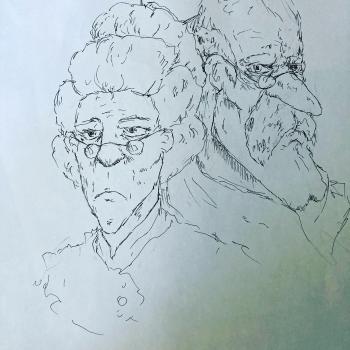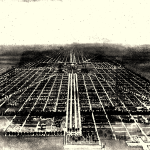A woman’s work–particularly her email inbox–is never ever ever done.
I managed, yesterday, to finish another chapter of Christopher Lasch’s Women and the Common Life. This chapter was called “The Sexual Division of Labor, the Decline of Civic Culture, and the Rise of the Suburbs” and for real, I highlighted almost the whole thing. I kept wanting to read it out loud to whoever was in the room, which only made all my children and husband roll their eyes and try to creep away. If I could, I would spam all of you with piles and piles of quotes, and peer into your faces to see if your whole life has been transformed. I won’t though. I will restrain myself.
What I’m liking so much about this book, so far, is that Lasch–who, as far as I can tell, is not a Christian, at least, he’s not writing within that peculiar niche–is telling the story of the last two centuries in a way that has far more resonance for me than the way current prominent “Christians” are trying to spin it. I’m not two hundred years old, thank goodness, but, like everyone else, the shifts and changes of all those years are sups impactful for my daily wellbeing. What was the brilliant title of that Patheos post so long ago? Something like The Reason You’re Depressed Is Total Societal Collapse.
Anyway, the chapter starts out this way:
The history of women, as the media have taught us to understand it, falls into two epochs, divided by the sexual revolution of the sixties. It was only in the sixties, according to the media’s foreshortened view of things, that women began their painful climb out of the sexual dark ages. They entered the work force, gained control over their own bodies, and challenged male supremacy in all its forms—political, economic, ideological. Until then, women labored under age-old disabilities. Since the sixties, they have “come a long way,” and although the revolution against patriarchy still has a long way to go before women gain full equality, it is irresistible. There can be no going back to the old days, to the “traditional” arrangements that kept women at home and left men in control of the great world outside. It is this undifferentiated image of the old days that I want to call into question—the impression that women’s lives used to be taken up entirely by the demands of housework and motherhood. In reality, full-time motherhood—the rejection of which touched off the latest wave of feminist agitation in the sixties—was something new and historically unprecedented. It was largely a product of the rapid growth of suburbs after World War II, and the feminist revival initiated by Betty Friedan’s The Feminine Mystique originated as a direct response, often a very self-conscious response, not to the age-old oppression of women, but to the suburbanization of the American soul. Only later did the feminist movement come to understand the condition it sought to change—the division of labor that confined women to the home—as a “patriarchal” system that could be found, with minor variations, in all times and places. In the popular mind, the division of labor that prevailed in postwar suburbia thus came to be identified—with a corresponding loss of intellectual clarity—with the division of sexual labor in general. All societies distinguish between women’s work and men’s work. Such distinctions are often invidious, serving to keep women in a subordinate status. It is only recently, however, that “woman’s place” has been defined in such a way as to exclude her from participation in the common life beyond the household.* [emphasis mine]
I mean, I won’t go on and quote the whole chapter, I promise. What I am just loving so much is some solid ground to plant my feet on against the onslaught of constant gaslighting of people like KduMez who want to indict the boogeyman evangelical for 1. clinging to something wicked and 2. expressing religious conviction through consumerism. As in, evangelicals don’t really believe what they say they believe, they just love all that classless merch.
Lasch teases out the shifts and changes of that age, not about evangelicals, but about how the idea of work itself so utterly collapsed, for both men and women, that bewildering, and really unnecessary, envy metastasized–women envying the work of men, and men envying the work of women–because everyone was rightly so dissatisfied. Honestly, after reading just this chapter alone (but really the whole book), looking back over the years I would say that religious people, including evangelicals, were the only ones who tried to grapple honestly with the theological and emotional implications of the ruin of work and the ramifications of that collapse for the soul. They tried to dignify motherhood. They tried to protect women from meaningless drudgery. They tried to reestablish the broken social networks that human people need to survive. They tried to rejoin sex to its necessary context–that would be marriage, in case anyone has really forgotten. Did a lot of them do a bad job? Sure. Did they “focus” on the wrong thing–the family? Sure. Of course. But they were circling around something real and tragic, and trying to provide the only remedy that could be there…God, really, but also the biological reality of men and women being different from each other. The option that won the day–that there should be no distinction between male and female, child and adult, boss and employee because Galatians bla bla bla–is proving to be apocalyptically terrible, and contrary to the happiness of everyone. The only way any of this looks good is if you lie about it.
Anyway, I have to trot along but I will probably have more to say about this because it’s so good. Have a nice day!
Photo by Avel Chuklanov on Unsplash
*Lasch, Christopher. Women and the Common Life: Love, Marriage, and Feminism. W. W. Norton & Company. Kindle Edition.













